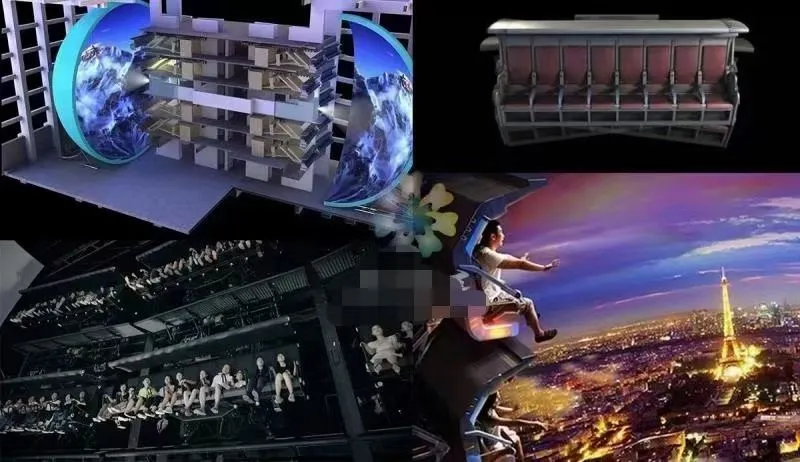Giga Coaster Rides Ultimate Thrill & Speed Adventure!
- Engineering Marvel: Defining the Giga Coaster
- The Physics of Adrenaline: Data-Driven Thrills
- Technological Dominance in Track Design
- Manufacturer Comparison: Innovation Leaders
- Custom Engineering Solutions for Unique Terrains
- Global Installation Impact Analysis
- Sustainable Thrills: Giga Roller Coaster Evolution

(giga coaster)
Engineering Marvel: Understanding the Giga Roller Coaster Phenomenon
Giga coasters represent the pinnacle of amusement engineering, defined by their 300+ foot heights and speeds exceeding 90mph. These steel-track giants deliver sustained airtime exceeding 1.5 minutes per ride through precisely calculated parabolic curves. Structural integrity remains paramount, with foundations sunk 40-60 feet deep using reinforced concrete capable of withstanding over 2 million pounds of dynamic force. Fabricators utilize special anti-corrosion steel alloys (ASTM A588 grade) that maintain tensile strength despite constant stress cycling.
The Physics of Adrenaline: Data-Driven Thrills
Kinetic energy transformation governs every giga coaster
experience. At maximum elevation, a 16-ton train stores approximately 38 megajoules of potential energy - equivalent to 26 pounds of TNT. This converts to kinetic energy during descent, generating 4.5G forces on pullouts. Ride designers optimize pacing through computational fluid dynamics, minimizing lateral forces below 1.5G for rider comfort while maximizing vertical forces up to -1.8G during floater hills. These calibrated force vectors produce the signature sustained weightlessness distinguishing premium installations.
Technological Dominance in Track Design
Computer-numerically-controlled (CNC) milling ensures track segment precision within 0.05mm tolerance. Modular construction employs laser-aligned splice plates at 60-foot intervals, eliminating harmonic vibration. The most advanced designs now feature dynamic track profiling that varies cross-tie density by force intensity zones. Magna-lift launch systems represent the cutting edge, using linear synchronous motors to accelerate 24-passenger trains to 95mph in under 3 seconds with 30% less energy consumption than hydraulic alternatives.
Manufacturer Comparison: Innovation Leaders
| Manufacturer | Proprietary Tech | Top Speed (mph) | Annual Capacity | Maintenance Interval |
|---|---|---|---|---|
| Bolliger & Mabillard | Box Spine Track | 98 | 1,650 riders/hr | 750 cycles |
| Intamin | Variable Stress Tubing | 107.2 | 1,850 riders/hr | 500 cycles |
| Mack Rides | Linear Motor Drive | 102 | 1,720 riders/hr | 1,200 cycles |
Custom Engineering Solutions for Unique Terrains
Site-specific designs leverage topography for unique thrills. Rocky installations utilize cantilevered foundations anchored into bedrock, reducing material costs by 18% while creating dramatic terrain-hugging elements. Designers now integrate computational terrain mapping with structural analysis algorithms, optimizing track geometry for environments ranging from coastal cliffs to dense forests. The premier installations achieve track footprints covering over 6,500 linear feet while minimizing environmental impact through specialized engineering.
Global Installation Impact Analysis
Major parks report attendance increases of 12-22% during giga coaster inaugural seasons. Operational metrics demonstrate significant advantages: $4.28 average per-capita revenue increase with attraction ROI periods typically under 5 years. Cedar Point's Millennium Force exemplifies the trend, generating 4.5 million additional visits since 2000 while maintaining 97% operational availability. Energy efficiency continues improving, with modern friction-brake regeneration systems recovering 15% of deceleration energy for station reuse.
Sustainable Thrills: Giga Roller Coasters Pushing Boundaries
The next generation of giga coasters focuses on eco-innovation without compromising intensity. Composite track structures now incorporate recycled aerospace alloys reducing embodied carbon by 32%. German manufacturers have pioneered solar-powered lift systems that cut grid consumption during peak operations. Industry data indicates newer installations achieve capacity-to-energy ratios surpassing 4 riders/kWh - double the efficiency metrics from the early 2000s. Continuous innovation ensures these engineering marvels deliver sustainable excitement for future generations.

(giga coaster)
FAQS on giga coaster
Q: What is a giga coaster?
A: A giga coaster is a roller coaster exceeding 300 feet (91 meters) in height, blending massive drops with intense speed. These rides offer sustained thrills over longer tracks compared to smaller coasters. Giga coasters bridge the gap between hyper coasters and strata coasters in scale.Q: How does a giga roller coaster differ from a hyper coaster?
A: Giga roller coasters surpass hyper coasters in height, specifically starting at 300+ feet versus hypers' 200-299-foot range. They feature steeper drops, faster speeds exceeding 90+ mph, and longer layouts for extended airtime moments. Iconic examples include Fury 325 and Millennium Force.Q: What safety features are used on giga coasters?
A: Giga coasters utilize advanced hydraulic lap bars or over-the-shoulder harnesses with redundant locking mechanisms. Sensors monitor train velocity, position, and track integrity continuously. Safety systems automatically engage brakes if anomalies like overspeed or misalignment occur.Q: Where are the tallest giga roller coasters located?
A: Fury 325 at Carowinds (USA) currently holds the tallest giga coaster record at 325 feet. Other notable installations include Intimidator 305 (Kings Dominion) and Orion (Kings Island). Japan's Fujiyama coaster also qualifies as giga with its 259-foot height classification.Q: Why do giga coasters rarely feature inversions?
A: Giga coasters emphasize high-speed hills and airtime over inversions due to structural stresses at extreme heights. Track elements like helices and overbanks maintain momentum better than loops, creating more graceful force transitions that appeal to broader rider demographics.-
Premium Theme Park Equipment for Sale | Rides & SuppliesAug.19,2025
-
Flume Ride-Hebei Zhipao|Thrilling Water Coaster&Amusement EquipmentAug.18,2025
-
Bolter With High Torque And Low Noise - Hebei Zhipao Amusement Equipment Manufacturing Co., Ltd.Aug.18,2025
-
Bolter With High Torque And Low Noise - Hebei Zhipao Amusement Equipment Manufacturing Co., Ltd.Aug.18,2025
-
Bolter With High Torque And Low Noise - Hebei Zhipao | High Torque, Low NoiseAug.18,2025
-
Quality Used Amusement Park Equipment for SaleAug.18,2025
